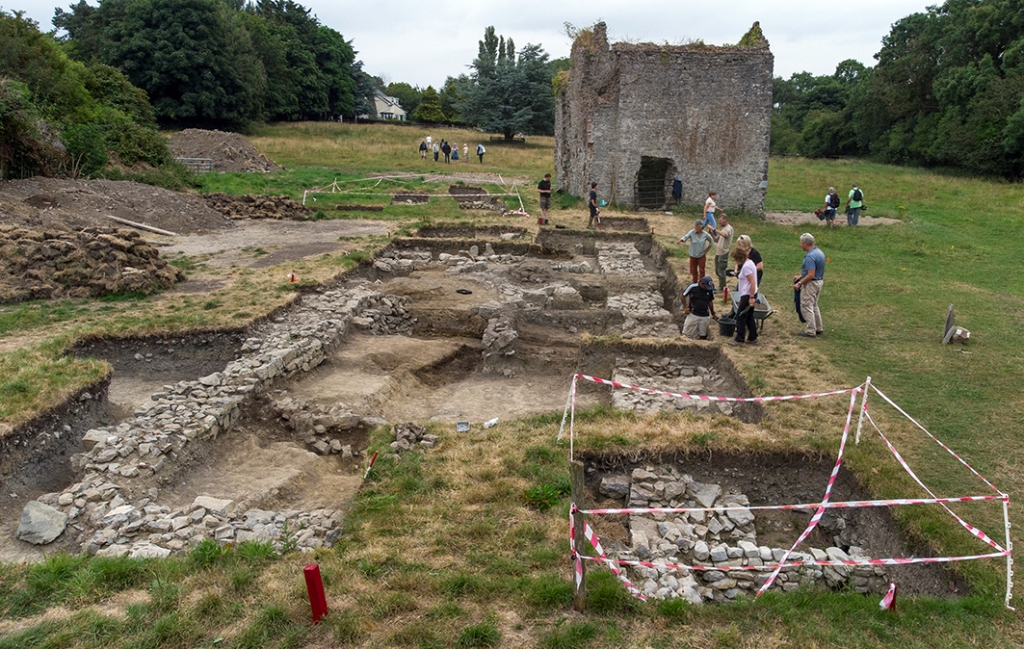
The above is of the church ruins in the graveyard at Dysart in Louth. This is a fairly typical example of a late 15th/early 16th-century church (although the history of the site goes back many hundreds of years before) in the area, made of greywacke, with some roughly coursed limestone. The main give-away for the date is the double bell-cote, as are the directly opposing doors in the sidewalls of the church, both of which are tell-tale hallmarks of later medieval churches in Ireland. It is in ruins since at least 1682.

Above we can see the worked door (note how the ground level has risen) and below, we can see how the stoup just inside the door has vanished, but the surrounds remain.

It is a nice, atmospheric place to visit and unlike many graveyards is immaculately kept. There is also a lovely small Marian grotto in the corner of the graveyard, which was erected in the year 2000 (somewhat unusually recently) to the memory of those interred in this ancient graveyard.

Just up the road is the more modern Catholic church which is still in use (https://www.buildingsofireland.ie/build ... unty-louth), built in 1766. Across the road from which are the almost ruinous remains of the national school of the mid 19th century (great photos and detail here: https://endaoflaherty.com/2016/10/11/d ... -co-louth/). All of this being on the former Barmeath estate, the castle of which remains intact and lived in nearby by the Bellew family: http://www.ihh.ie/index.cfm/houses/hous ... h%20Castle
Generations of history, life, death, persecution, hope and joy told by a handful of buildings within a very small area.


